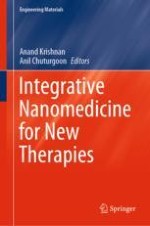2020 | OriginalPaper | Chapter
The Importance of Nano-materials Characterization Techniques
Authors : Yazan Al Thaher, Balakumar Chandrasekaran, Sarojini Jeeva Panchu
Published in: Integrative Nanomedicine for New Therapies
Publisher: Springer International Publishing
Activate our intelligent search to find suitable subject content or patents.
Select sections of text to find matching patents with Artificial Intelligence. powered by
Select sections of text to find additional relevant content using AI-assisted search. powered by
